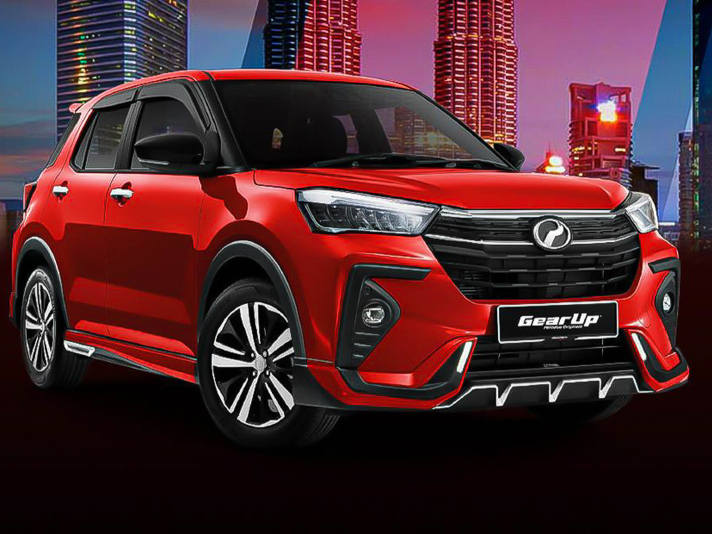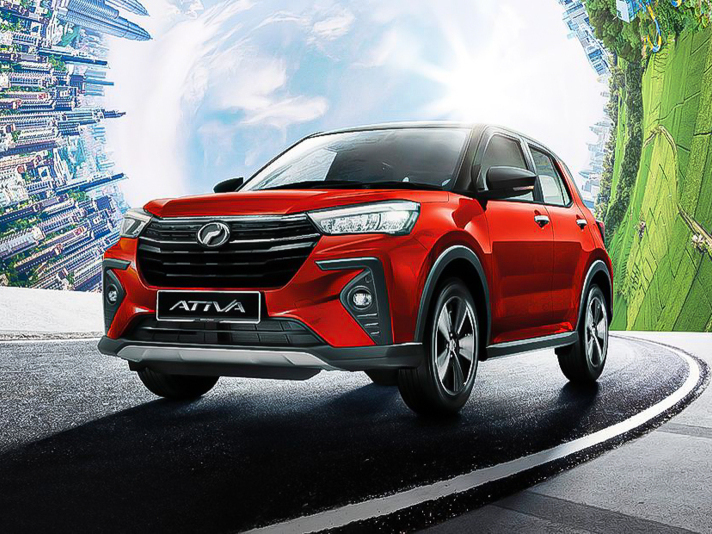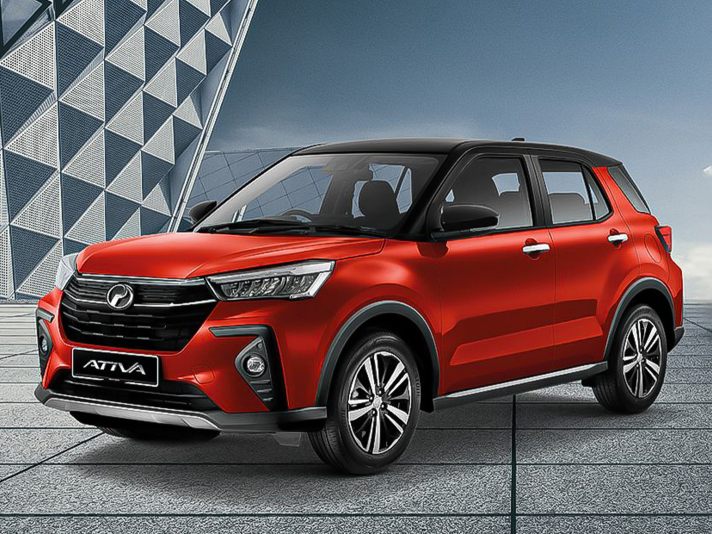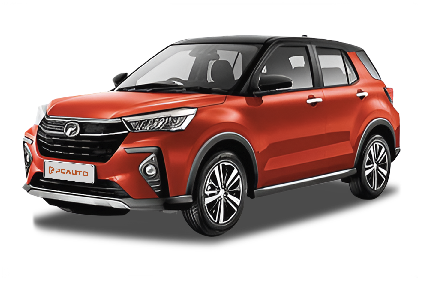Q
Is Ativa a hybrid car?
The Perodua Ativa isn't a hybrid. It's a compact SUV packing a 1.0-liter turbocharged engine (the D27A), sticking with a conventional fuel-powered setup paired with a D-CVT gearbox. Its main selling points? Fuel efficiency and practicality. Now, while there's no hybrid Ativa on the cards right now, Perodua *has* been dipping its toes into more efficient tech lately. Case in point: the Axia Hybrid. So, could we see a hybrid Ativa down the line? It's definitely not out of the question.
Hybrids are gaining serious traction in Malaysia, and it's easy to see why. They blend the best of both worlds: a petrol engine and an electric motor. That means you save on fuel and cut down on emissions – perfect for eco-conscious drivers who also want to keep a lid on running costs. If hybrids are more your speed, keep an eye on Perodua's future moves, or check out the hybrid offerings from the likes of Toyota and Honda. Both have solid reputations and perform well in the Malaysian market.
Special Disclaimer: This content is published by users and does not represent the views or position of PCauto.
Related Q&A
Q
How long can an Ativa battery last?
The battery life of the Perodua Ativa typically ranges from 2 to 3 years, depending on usage habits and environmental factors. Malaysia's hot and humid climate can accelerate battery aging, so it's advisable to regularly check the battery status to ensure optimal performance. Key factors affecting battery lifespan include frequent short trips (which prevent full charging), usage of electronic devices, and prolonged parking. Drivers can extend battery life by avoiding excessive use of electronics when the car is parked and taking regular long drives to help fully charge the battery. It's worth noting that most modern car batteries are maintenance-free, but you should still pay attention to the battery warning light or have it professionally tested. Difficulty starting the vehicle or dimmed lights may indicate the need for a replacement. For hybrid models, the high-voltage battery system is designed to last longer, but the 12V auxiliary battery still requires similar maintenance. It's recommended to follow the original maintenance schedule and have the battery inspected and replaced at authorized service centers to ensure the stable operation of the vehicle's electrical system and to benefit from the quality assurance of genuine parts.
Q
How much is Ativa 2021 in Malaysia?
The 2021 Perodua Ativa's price in Malaysia varies by trim level. The entry-level Ativa 1.0L X starts at around RM62,500, while the higher-spec Ativa 1.0L AV goes for approximately RM72,400. Actual prices might fluctuate slightly depending on regional discounts or promotional offers. As Perodua's first SUV with a 1.0-liter turbocharged engine, the Ativa has drawn in many buyers with its fuel efficiency and sleek looks. It also comes packed with advanced safety features like the ASA 3.0 (Advanced Safety Assist) system, which includes pre-collision warning and lane keep assist. With decent ground clearance and good cargo space, this car is perfect for city driving and family use. If you're thinking about getting an Ativa, head down to your nearest Perodua dealership for a test drive to get a real feel for how it handles and check out the specs. While you're there, ask about their latest promotions—you might score some extra perks or free accessories.
Q
How many cc is Ativa?
The Perodua Ativa is a highly popular compact SUV in the Malaysian market. It is powered by a 1.0-liter three-cylinder turbocharged engine with an actual displacement of 998cc, falling into the category of small-displacement turbocharged engines. This design ensures power output while also taking fuel economy into account, making it very suitable for city driving. The Ativa has a maximum power of 98 horsepower and a peak torque of 140 Nm. Paired with a D-CVT transmission, it offers smooth power delivery and a responsive performance, which is ideal for daily commuting and family use.
It's worth mentioning that small-displacement turbocharged engines have become increasingly popular in the Malaysian market in recent years. They can provide decent power performance while reducing fuel consumption and emissions, meeting the dual demands of modern consumers for environmental protection and economy. The Ativa is also equipped with an advanced Safety Assist system, including functions such as pre-collision warning and lane-keeping assist, which further enhances driving safety.
For Malaysian consumers with a limited budget who want to enjoy the practicality and technological features of an SUV, the Ativa is a worthy option. Its cost-effectiveness and low maintenance costs are also what make it attractive.
Q
How many cylinders are in Perodua Ativa?
The Perodua Ativa is equipped with a 1.0-liter three-cylinder turbocharged engine, so it has a total of three cylinders. This engine adopts the advanced Dual VVT-i technology, which can provide good power output while taking fuel economy into account. It's very suitable for the frequent start-stop traffic conditions in Malaysian cities. The design of the three-cylinder engine is becoming more and more common in small SUVs because it can achieve high efficiency in a compact size and reduce the overall vehicle weight at the same time, which is very practical for daily commuting. The maximum power of Ativa's engine is 98 horsepower, and the peak torque is 140 N·m. It is mated with a D-CVT gearbox, and its overall performance is smooth and reliable. As a popular SUV model under Perodua, Ativa is loved by many Malaysian consumers, especially young families and urban commuters, thanks to its small and flexible body and economical fuel consumption. Although the three-cylinder engine requires higher technical requirements in noise and vibration control, the modern automotive industry has significantly improved these problems through technologies such as balance shafts to ensure driving comfort.
Q
What is the starting price of Ativa?
As one of the most popular entry - level SUVs in the Malaysian market, the starting price of the Perodua Ativa is around RM62,500 (excluding insurance). This is the base price for the 1.0L Turbo AV version. For the higher - spec 1.0L Turbo H version, the price starts from around RM72,000. The actual price may vary slightly due to dealer promotions or optional packages.
The Ativa is powered by a 1.0 - liter three - cylinder turbocharged engine, paired with a D - CVT transmission. It focuses on fuel economy, with an official fuel consumption data of 18.9 km/L. It also comes with the ASA 3.0 advanced safety assist system, including functions like pre - collision warning and lane - keeping assist. Its cost - effectiveness is quite competitive among B - segment SUVs.
It's worth noting that the Ativa is a sister model of the Japanese Daihatsu Rocky and Toyota Raize, sharing the DNGA modular platform. However, it has adjusted the suspension settings according to Malaysian road conditions and uses local parts to control costs.
When buying a car, it is recommended that consumers compare the road tax rates in different states and pay attention to the after - sales promotion packages regularly launched by Perodua, such as free maintenance times or low - interest loans. These can further reduce the cost of car ownership.
Q
Does Ativa have auto brake?
The Perodua Ativa is indeed equipped with an Autonomous Emergency Braking (AEB) system, which is part of its advanced safety assistance features. This system uses a front - mounted camera and radar to detect vehicles or pedestrians ahead. When a potential collision is detected, it automatically triggers the brakes to reduce the risk of accidents, making it particularly suitable for the complex urban traffic environment in Malaysia.
In addition to AEB, the Ativa also comes with active safety features such as Lane Keeping Assist and Adaptive Cruise Control. Overall, it has achieved a leading level of protection in its class.
It's worth noting that the Autonomous Emergency Braking system may have different technical names among different brands. For example, Toyota calls it the Pre - Collision System (PCS), while Honda refers to it as the Collision Mitigation Braking System (CMBS). However, their core functions are similar.
As a car owner, it is recommended to regularly check the cleanliness of the radar and camera to ensure the system's sensitivity. At the same time, it's important to understand that such systems are only auxiliary functions, and maintaining concentration while driving remains the primary guarantee for safety.
According to data from the Malaysian Road Safety Research Institute, vehicles equipped with AEB can reduce rear - end collisions by approximately 40%. This kind of technology is gradually becoming the mainstream configuration for new local cars.
Q
Can Ativa use CarPlay?
The Ativa is compatible with CarPlay. Some users have reported that the 2021 Perodua Ativa in Malaysia can use CarPlay. However, the data cable provided as a bonus doesn't work, causing constant disconnection. You need to use the Type-C 3.0 fast-charging data cable that comes with the original phone to avoid disconnection. Also, the overseas car infotainment system must have Easy Connect to use CarPlay.
CarPlay is an in-vehicle system launched by Apple Inc. in the United States. It seamlessly integrates users' iOS devices and iOS experience with the dashboard system. Once successfully connected, you can use the voice assistant Siri on your phone to control the in-car multimedia system. You can also operate through the touch screen on the car's dashboard or the physical buttons on the steering wheel. This makes driving operations more convenient, reduces the time drivers spend on operations while driving, and improves safety.
Q
Is Ativa 4 wheel drive?
The Perodua Ativa is a popular small SUV in the Malaysian market. However, it's not a four-wheel drive (4WD) vehicle. Instead, it uses a front-wheel drive (FWD) system. This design emphasizes fuel economy for city driving and daily practicality. The Ativa is equipped with a 1.0-liter turbocharged engine paired with a D-CVT transmission. Its power performance is suitable for city commuting. Meanwhile, its compact body size and high ground clearance also improve its passability on common road conditions in Malaysia.
For users who need four-wheel drive, they can consider other models such as the Proton X70 (some versions offer AWD) or the Toyota Rush (with an optional 4WD version). These models are more suitable for off-road or slippery roads. Four-wheel drive systems are generally divided into all-wheel drive (AWD) and part-time four-wheel drive (4WD). The former is suitable for all-weather road conditions, while the latter focuses more on off-road performance. When making a choice, you need to weigh fuel consumption, cost, and driving scenarios according to your actual needs.
In Malaysia's rainy climate, four-wheel drive models can provide better grip. However, front-wheel drive vehicles with an electronic stability system (like the ASA 3.0 standard on the Ativa) can also meet most daily needs.
Q
Is Ativa a safe car?
As a popular small SUV in the Malaysian market, the Perodua Ativa's safety performance meets the mainstream level of models in its price range. It comes standard with basic features such as dual airbags, ABS + EBD, Electronic Stability Control (ESC), and Hill Start Assist. The high - end version also adds side airbags and advanced active safety systems like Autonomous Emergency Braking (AEB) and Lane Departure Warning. Overall, its safety equipment is better than entry - level models in the same class but not as good as more premium products.
According to the ASEAN NCAP test, the Ativa received a five - star rating, with an 83% score in the adult occupant protection category. This shows that its body structure can effectively protect passengers in a collision. However, it should be noted that these tests are conducted under standard conditions, and the results in real - world road accidents may vary depending on the collision angle and speed.
For Malaysian consumers, the safety performance of the Ativa meets the needs of daily urban commuting. However, if you frequently drive long - distance on highways, it is recommended to choose a version with a more comprehensive active safety system.
It's important to note that the safety performance of any vehicle highly depends on proper use, including wearing seat belts, obeying speed limits, and regular maintenance. Good driving habits, along with maintaining an appropriate following distance and having a defensive driving mindset, can often prevent accidents more effectively than vehicle configurations.
Q
Does Ativa save fuel?
As a B-Segment SUV equipped with a 1.0-liter turbocharged engine, the Perodua Ativa really performs well in terms of fuel economy. Official data shows that its fuel consumption is about 18.9 km/l. This figure is quite fuel-efficient among vehicles in the same class, making it especially suitable for the stop-and-go traffic conditions in Malaysian cities. This is mainly due to its D-CVT transmission and engine auto start-stop technology, which can effectively reduce unnecessary fuel consumption.
If you want to further improve fuel efficiency, it is recommended to keep up with regular maintenance, use the recommended viscosity of engine oil, and avoid bad driving habits such as rapid acceleration and hard braking. Actually, apart from the vehicle's own design, driving style and road conditions also play a significant role in fuel consumption. Small SUVs like the Ativa are more flexible and fuel-efficient for urban commuting than large SUVs. However, if you often drive long distances on highways, the fuel consumption advantage may not be as obvious.
In addition, the proper use of air conditioning in Malaysia's hot weather can also affect fuel consumption. It is recommended to set the temperature between 23 - 25 degrees Celsius to achieve energy-saving results.
Popular Cars
Model Year
Car Compare
Car Photo
Latest Q&A
Q
Why is gasoline a fuel?
Gasoline can serve as a fuel because it possesses core properties suitable for providing power and the ability to convert energy. It is a hydrocarbon mixture obtained through fractional distillation and cracking of petroleum, mainly containing C5-C12 aliphatic hydrocarbons, naphthenes, and a small amount of aromatic hydrocarbons. It is characterized by volatility and flammability, with low viscosity facilitating smooth flow in injection systems, and rapid evaporation enabling quick formation of a uniform combustible mixture with air. Gasoline stores chemical energy; when ignited by a spark plug in the engine combustion chamber, it burns rapidly to release a large amount of thermal energy, which pushes the piston to move and converts into mechanical energy, providing power for vehicles such as cars and motorcycles. In addition, the anti-knock property of gasoline (measured by octane number) can adapt to engines with different compression ratios, ensuring stable operation and performance; it has a high energy density, storing more energy per unit volume, good combustion efficiency, and high availability of gas stations for convenient use. Therefore, it has become the main fuel for spark-ignition internal combustion engines and is widely used in transportation and related fields.
Q
What are 1st, 2nd, and 3rd family gases?
The first, second, and third family cars are vehicle categories classified based on the stages of family car-purchasing needs. The first family car is an entry-level economical model, such as the Perodua Axia and Proton Saga, priced at approximately 30,000 to 50,000 Malaysian ringgit. It emphasizes fuel efficiency and practicality, making it suitable for young families purchasing a car for the first time. The second family car falls into the mid-range category, offering more space and enhanced features, such as the Proton Persona and Toyota Vios, priced between 60,000 and 100,000 Malaysian ringgit, catering to the comfort requirements of growing families. The third family car is a premium model or an MPV/SUV, such as the Proton Exora and Honda CR-V, priced above 100,000 Malaysian ringgit. It boasts spacious interiors and upscale configurations, ideal for larger families or long-distance travel. Malaysian consumers typically prioritize fuel efficiency, maintenance costs, and space when selecting a vehicle. Families at different life stages adjust their car choices accordingly. For instance, small families may begin with the first category, upgrade to the second after having children, and larger families often opt for the third category.
Q
What are the four types of natural gas?
Natural gas can be classified into four main types based on its source: gas field gas (pure natural gas), associated petroleum gas, condensate field gas, and coalbed methane. Gas field gas is directly extracted from gas wells, typically containing over 90% methane with minimal impurities. Associated petroleum gas is a byproduct of oil extraction, containing not only methane but also significant amounts of other hydrocarbons such as ethane and propane. Condensate field gas yields light hydrocarbon fractions during extraction, characterized by a high methane content and small quantities of heavier hydrocarbons like pentane. Coalbed methane is extracted from underground coal seams, primarily consisting of methane and nitrogen, and must have a methane content exceeding 40% to be utilized as fuel. Due to compositional differences, these natural gas types vary in calorific value and applications. The first three are commonly used for urban gas supply, whereas coalbed methane requires purification before effective utilization. As a clean and efficient energy source, the development and utilization of these diverse natural gas types play a crucial role in optimizing energy structure.
Q
What are the three types of fuel gas?
Common fuel gases are mainly divided into three types: natural gas, liquefied petroleum gas (LPG), and manufactured gas. Natural gas is a flammable gas existing in nature, with methane as its main component. It is colorless and odorless, leaves no residue after combustion, and has high thermal efficiency, making it a clean energy source. Liquefied petroleum gas is a by-product of the petroleum refining process, whose main components include propane and butane. It is a gas at room temperature but can be converted into liquid through pressurization and cooling, facilitating storage and transportation. Manufactured gas is generated through thermochemical reactions of fossil fuels such as coal or petroleum under specific conditions, with main components including hydrogen, carbon monoxide, and methane. It has low production costs but produces certain pollution after combustion, so ventilation should be ensured during use. These three fuel gases have different application scenarios in the energy supply field, and their calorific values and usage characteristics also vary. For example, the calorific value of natural gas is approximately 33,000-36,000 kcal per cubic meter, that of LPG is about 90,000 kcal per kilogram, and that of manufactured gas is roughly 3,500-4,200 kcal per cubic meter. The different calorific values make them suitable for different energy demand scenarios such as households and industries.
Q
Is unleaded petrol a gas?
Unleaded gasoline is not a gas but a liquid fuel. It refers to gasoline with a lead content of less than 0.013 grams per liter and without the addition of tetraethyl lead as an anti-knock additive during the refining process. Its octane rating is typically 95, slightly lower than the 97 of leaded gasoline. The use of unleaded gasoline can effectively reduce emissions of harmful substances such as hydrocarbons, carbon monoxide, and nitrogen oxides in vehicle exhaust, thereby lowering pollution risks including smog, toxic gases, and acid rain. However, it should be noted that while unleaded gasoline contains no artificially added lead, it still retains trace amounts of lead from crude oil. Additionally, its combustion releases gases, particulate matter, and condensates, with particles smaller than 2 microns in diameter being particularly prone to prolonged suspension in the air and subsequent human inhalation. Thus, potential health impacts remain a concern. Currently, most vehicles can use unleaded gasoline directly, though certain models require selecting the appropriate octane grade as recommended by the manufacturer to ensure optimal engine performance and longevity.
View MoreRelated News

Perodua Ativa Hybrid may be launched, a fuel-efficient small car that doesn't require charging
MichaelDec 26, 2025

Perodua Traz VS Ativa, which one is more worth buying?
AshleyDec 23, 2025

Perodua Ativa review: A B-Segment SUV with outstanding value for money
AshleyJul 21, 2025

Perodua Ativa interior design revealed: One of Malaysia's most popular urban SUVs
JamesJul 14, 2025

Perodua Ativa: Why Malaysia's Top Compact SUV?
MichaelJun 12, 2025
View More


















Pros
Cons